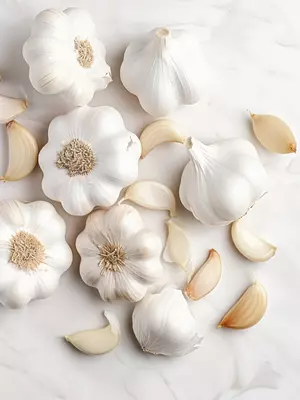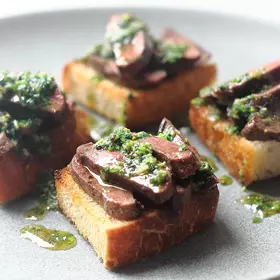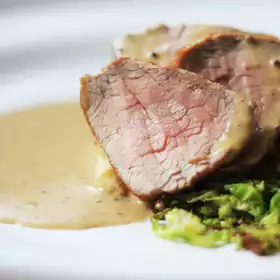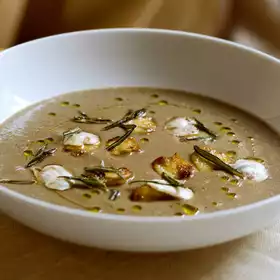Garlic
A member of the onion family, garlic contains a strong-smelling sulphur compound called allicin that gives it its distinctive taste and aroma. Combined with onions, garlic comprises the base for countless sauces, soups and curries. When chopped or crushed, garlic cloves release allicin which provides many of garlic’s nutritional benefits. Garlic is high in manganese, vitamin C, vitamin B6 and selenium. It also contains antioxidants that may help boost the immune system and reduce inflammation.
Native to Central Asia, garlic was a staple in Ancient Egyptian, Greek and Roman cuisine. By the Middle Ages, garlic was grown across much of Europe and used extensively in Medieval British cookery. Today, garlic remains a popular and versatile cooking ingredient across the UK. Garlic’s assertive, pungent flavour mellows out once cooked. Roasted whole garlic becomes sweet and savoury. Garlic pairs well with meat, fish, vegetables, cheeses, bread and pasta. It is often used in marinades, sauces, soups and stews.
Throughout history, garlic has been thought to have medicinal properties from fighting off colds to warding off vampires! While the science is still unclear, garlic continues to be prized for its versatility in the kitchen. With its long shelf life and ability to boost the flavour of any dish, garlic remains an essential ingredient in cuisines across the world.

Nutrition
| Per 100 g | Daily Value | |
| Calories | 145 | 6% |
| Total fat | 0.7 g | 0.7% |
| Saturated fat | 0 | 0% |
| Protein | 6 g | 8% |
| Sodium | 16 mg | 0.7% |
| Potassium | 153 mg | 4% |
| Cholesterol | 0 | 0% |
| Carbohydrates | 33 g | 10% |
| Fibre | 2 g | 7% |
| Sugar | 1 g | 3% |




